
Chicane
A quick left - right / right - left "S-turn" usually placed onto straightaways in order to slow drivers down before they reach slower corners.
Choku-Dori (aka Chaku-Dari)
A commonly misused term in the United States. Oftentimes used to describe a side to side, swaying drift typically used on straightaways (aka Manji), but is really a long sliding drift through a braking zone.
Countersteer
Corrective steering used to balance and maintain an oversteered condition. (turning the steering wheel in the opposite direction of the turn once the vehicle starts to oversteer)
D1
Refers to the D1 Grand Prix - All Japan Professional drifting compettition. Held in various locations across Japan (and now the USA, Europe, and Asia) and judged by Keiichi Tsuchiya, the D1 has become the standard by which all drifters are judged. The D1 holds a multiple round point competition in which drivers compete for both individual event wins and overall season points. Competitions typically consist of a qualifying day for competitors to determine the top 32 drivers. The top 32 enter competition and perform a solo pass for judgment and further elimination. The next round consists of the top 16 drivers who (from this point in the competition on) are competing in head-to-head "Tsuiso" format. The drivers are eliminated round by round until one driver emerges as champion.
Donut
Allowing the rear wheels of a vehicle to burn rubber, causing the car to rotate around the front tires, again and again.
Drift
To cause a vehicle to exceed its tires' limits of adhesion, exhibiting a lateral slip, resulting in an oversteered condition.
Drift King
Japanese racer Keiichi Tsuchiya is a living legend in the world of drifting. Although many may claim to be good, there is only one true Drift King.
Drift Run
Refers to any vehicle proceeding through the designated Drift Course / Turn.
E-Braking (hand braking / side braking)
Using a vehicle’s emergency brake to induce a drift. (emergency brakes lock up only the rear wheels of a vehicle, making them perfect tools for drifting)
Exhibition Drift
The purpose of drifting at the Drift Session is to cause maximum oversteer in a vehicle while maintaining speed. Vehicles are not judged based on time trials or speed, but rather on the completion of clean and exaggerated drifts which maintain a reasonable rate of speed. Exhibition Drifting also includes techniques as one hand drifting, trying to open the door while drifting.
GTS
Grand Touring Sport, or something like that. A common addition to many sport type car names. Commonly referring to the 1984-1987 Toyota Corolla GTS.
see "Hachiroku"
Guardrails
The thing that separates the men from the boys according to Signal Auto's Fumiaki Komatsu. Hawaii Motorsports Center's got lots of them.
Hachiroku
Literally translated eight – six, but commonly used as the name for the AE86, 1984-1987 Toyota Corolla GTS. Runs on the DOHC 4-AGE motor, rear wheel drive w/ lsd.
Heel-Toe Shifting
A drifting technique where the clutch is pressed with the left foot while the right foot presses the brake with the toes and the heel slides over to the accelerator to rev the engine up before downshifting the vehicle. (allows smooth downshifting, without jolting the vehicle)
HIRS
Hawaii International Racing School. Offering classes to locals and tourists on professional race driving skills. Drivers get in-depth classroom instruction and driving time in spec race cars. Classes also include car control clinics where participants can use their own vehicles.
Limited Slip Differential (LSD)
Axle gearing that allows power to be transferred to the wheel with the most traction. Similar to posi traction. (allows both power wheels to “lock up” and spin at the same time)
Long Course
The full-length road course at Hawaii Raceway Park. Instead of turning from the Quarter Mile Straightaway at Short Course Turn 1, drivers proceed down the remaining straightaway to Long Course Turn 1 before heading back towards the Chicane.
Off-Camber
The first set of turns on the Hawaii Motorsports Center Road Course. "Off-Camber" describes the turns because the road slants away from the inside of the turn.
Oversteer
Causing a vehicle to over rotate while cornering. (causing a vehicle to be on the verge of spinning out; good for drifting and really fun)
Powerslide
An American racing term for drifting that commonly refers to utilizing excessive horsepower to cause a loss of traction resulting in a drift.
Road Course
A racing course made up of actual roadways consisting of various straightaways, corners, and bends. For example: a large parking lot with cones placed on it to designate a course would not a a "road course" since it does not consist of an actual roadway; neither would an oval-track be considered a road course since there is little / no variance of corners and straightaways in the course used.
Short Course
Used to refer to the course used at Drift Session events and most major competitions at Hawaii Motorsports Center. This typically begins at the Skid Pad, through the Staging Lanes, into the Sweeper, down the Quarter Mile Straightaway, through Short Course Turn 1, up the Back Straight, through the Chicane, and finally through the Off Camber. The entire Short Course can be connected by skilled drivers and is also run in reverse direction.
Silvia
Japanese version of the Nissan 240SX. Comes in S13, S14, or S15 variations. Typically coveted for its low cost, yet very sporty look and relatively powerful turbocharged, 4-cylinder engine the SR20-DET. A frequently used vehicle in the sport of drifting in Japan and abroad.
Staging Lanes
The set of lanes between the Off-Camber and the Sweeper at Hawaii Motorsports Center. The lanes are marked with paint and numbers.
Also used to refer to the line or cars leading to either the Road Course or U-Turn.
Sweeper
The long "sweeping" turn that leads from the staging lanes, past the tower, and out onto the quarter mile straightaway. One of the most challenging sections of Hawaii Motorsports Center, to master the sweeper is to induce drift after the exit of the Off Camber, maintain a constant radius drift through the entire sweeper and end on the straightaway at high speed. The guardrails on both sides of the sweeper and narrow roadway make this corner particularly dangerous.
Understeer
A loss of traction in a vehicle’s front tires, caused by excessive speed in relation to a cornering angle, causing the vehicle to slide outwards during a turn. (taking a turn too fast and not being able to hang it, your car starts to slide outward; not good and not fun)
U-Turn
The hairpin turn at the end of the quarter mile straightaway at Hawaii Motorsports Center (aka Turn 1).
By http://www.driftsession.com/
Saturday, July 14, 2007
Drifting Glossary
Drifting Rules
Driver Rules
1. All drivers must register their vehicles prior to drifting. At Vehicle Sign In you'll be charged according to the event and given instructions on where to pit your vehicle.
2. All first time drifters must notify the attendant at vehicle sign in to receive a track orientation.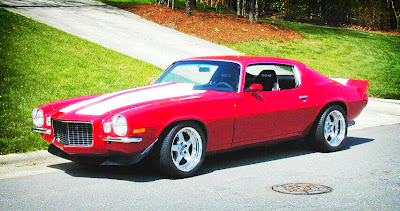
3. All drivers must be registered to drive. Once registered, drivers may share vehicles amongst other registered drivers, but may not allow non-registered persons to drive.
4. Drivers must be wearing long pants, covered shoes, a shirt that covers the shoulders (no tank tops), and a racing helmet. Racing suits are strongly encouraged. Helmets must remain on and strapped as long as your vehicle in on the track.
Passengers
1. Only one passenger, other than the driver, is allowed (per vehicle) while drifting.
2. Passengers must board or exit their host’s vehicle prior to entering the track itself.
3. Passengers must sit in the front seat of the vehicle and wear proper safety restraints at all times.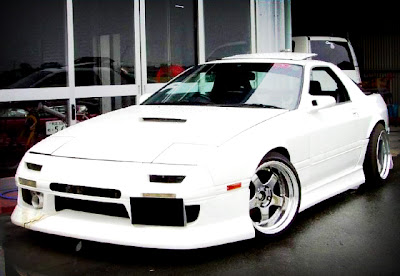
4. Drivers are responsible for making sure that each passenger follows appropriate rules and regulations.
5. Drivers must be wearing long pants, covered shoes, a shirt that covers the shoulders (no tank tops), and a racing helmet. Racing suits are strongly encouraged. Helmets must remain on and strapped as long as a vehicle in on the track.
6. All body parts must remain within the vehicle compartment while on track.
Spectators
1. All drivers and spectators must park their vehicles in the designated parking area.
2. All drivers and spectators must remain behind the safety barriers at all times. On the Road Course, no spectator may get closer than 100 feet from the roadway, excluding the Main Gate and Pit Area. Safety barriers are not always set up so use your judgment when choosing an area to watch the events.
3. Spectators at Long Course Turn 1 may not go past the starting line for the course. All spectators must also remain on the lower straightaway at all times.
General Track Safety
1. Road Speed is 10 mph in all areas of the track, unless you are an active driver on the track.
2. With the exception of the center road and parking area, all drivers must follow a counter clockwise direction on the track (unless the track is reversed for the day).
3. Vehicles must not leave the roadway during a drift run.
4. If your vehicle leaves the road (during a drift run) reduce speed immediately and return to the road at low speed, so you do not kick up dirt and rocks (onto the road or into your car's paint).
5. All drivers and passengers must be wearing safety restraints while proceeding on a drift run.
6. Drivers must wait in a single file line (in their vehicles) in the staging lanes prior to entering a course.
8. No trucks, vans, or SUVs are allowed to drift without approval. Any soft-top convertables must have adequate rollover protection. The Drift Session reserves the right to refuse track use to any vehicle deemed unsafe for participation.
9. All passengers must be at least 14 years old.
By http://www.driftsession.com/
Friday, July 6, 2007
Getting Started & Drifting Techniques
There is no simple way to learn drifting. Drifting is a form of driving that incorporates many aspects of driving such as Autocross, Rally, Road racing and Stock car racing.
Typically a good drifter will have a solid background various types of motor sports.
The concept behind drifting is to understand what the vehicle is doing and making it do exactly what you intended to do. Drift UK hold events in all areas of the UK.
Do not attend any other forms of driving events to learn how to drift such as Autocross and Road racing events. You may potentially upset the organizer and the property manager by doing something you were not permitted to do. It is not smart to try and drift in roads or at unsupervised areas like car parks or empty roads.
When will I be ready for competition?
At the moment there are some events that give tuition beforehand, at Drift UK events this is the case but only you know when and if you are ready. However, Drift UK is working with a famous racing school and is training at this moment an instructor for the future.
Every driver should know that there are risks involved with any motor sport competition.
At one point or another, there is a possibility of an accident, but this is part of competition.
There are two main drifting techniques.
The first is called the 'clutch kick technique' and is the preferred method for rear-wheel drivers. With the clutching technique, you shift the car into second gear as you approach the turns. You then rev the engine to between 4,000 and 7,000 rpm, depending on the car. With the engine revved, you turn the car hard into the turn and 'pop' the clutch, causing the rear tyres to spin and lose traction.
To keep the car in the drifting motion until the next turn, you must keep your foot on the accelerator and make adjustments with the throttle and steering wheel to prevent spin out. If you've managed to keep the car in control, you can then cut the wheel in the other direction and attempt to slide around the next turn in one smooth motion.
However, if you went into the turn too slowly, the car may begin to regain traction and you'll have to re-apply the clutch kick technique.
Because front-wheel driven cars cannot produce tyre spin and traction loss at the rear wheels, they require a second, alternative method of drifting: the hand-brake technique.
While the clutching technique uses momentum and rear-wheel torque to power the car through a set of drifts, the hand brake technique relies solely on momentum. Using this style of drifting, you would simply pull the hand brake as you approach the set of turns to cause a sudden traction loss. Since there's no driving torque involved, it is much harder to maintain the traction loss through multiple turns using the hand-brake.
Instructors at our events will talk you through each technique at the practice event.
By http://www.driftuk.co.uk
Thursday, July 5, 2007
Mazda RX-7 92-02 Review
Mazda RX-7 (FD3S) 92-02 Review
Most people know two things about Mazda's 3rd generation RX-7 - 1) They are one of Japan's most beautiful cars 2) They've got funny engines that are prone to going bang. Point two is often over hyped and having previously owned one, am reasonably qualified to comment.
For me the shape of the RX-7 is superb - the double bubble roof and doors are two of my favourite features with the single side windows giving it that jet fighter look. I often marvelled at the rear panels - seemingly one smoothed piece of metal from the front of the roof all the way around the rear back and sides.
Sold officially in the UK from 1992 - 1995, there are a number of differences to the Japanese import RX-7s, available 1992-2002, rocking up on our shores. Built to compete with the likes of Porsche's 968, the 3rd generation RX-7 (FD3S) gained a much sleeker body than the previous RX-7 (FC3S). Weight was a key issue in the development of the car and Mazda's compact rotary (Wankel) engine helped deliver the goods. The 13B-REW two rotor engine was coupled with a sequential twin turbo system delivering phenomenal performance in a compact package to place the engine behind the front suspension. Developing 237bhp in UK spec, Japanese imports have anywhere between 255bhp and 280bhp - if standard which is a rare thing.
Opening the door via the concealed door handle the door swings open - a keen eye will spot the plastic hinge used for weight saving - and you're greeted with a low slung seat and a dash that wraps around the driver. A large tachometer dominates the centre of the dial arrangement with the speedo to the right and oil pressure, water temperature and petrol on the right. The hand brake and gearstick are mounted high up on the transmission tunnel helping that feeling of being low down with everything to hand.
There are many different variants. As mentioned there's the UK / Japanese choice with the UK spec providing a sun roof, leather, 2 seats only and less power than the imports. There is a whole host of Japanese models - type x, type s, touring x, touring s, type r1, type r2, type rz, type rs, type rb, type rb Bathurst, type rb Bathurst x, type rsr, type r, rb-s, spirit r-a, spirit r-b, spirit r-c. Specification variations include leather, carbon seats, 2+2 seat layout, twin oil coolers and much more besides. In 1996 the ECU was changed from an 8 bit to 16 bit model, the rear gained much more attractive round rear lights increased to 265 bhp. In late 98/99 RX-7 received a mild face lift with a revised front end and rear spoiler. The turbo was also upgraded and boost pressure increased to increase the bhp on type r type rs type rz to 280 bhp. The final incarnation the RX-7 took was the run out model - the sought after Spirit R of which 1500 were produced.
Fire up an RX-7 with a non-standard exhaust and you'll know about it. Once up to temperature the fun begins - foot down and the needle pulls around the tacho at an alarming rate. At 4500rpm the second turbo kicks in FULL BOOST and away you go until the beeper sounds to tell you to change up. The gearing makes for fabulous pub talk - 70mph in second unless you've a shorter final drive. That may sound a little longer than most cars but you're rarely out of the power with the first turbo keeping things on the boil lower down the rev range. I love the fact the RX-7 is so visceral - it pops, it bangs dumping bags of fuel into it's hot exhaust system as you lift off to change gear.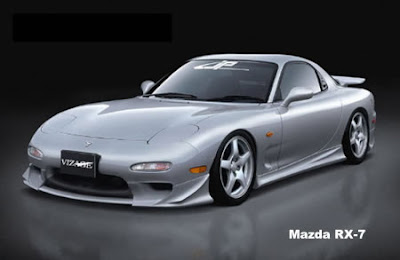
Day to day the RX-7 was great to live with - always an event - but you do have to be aware of a few things. They are thirsty - i got around 17mpg from mine with heavily tuned examples dropping further. If you don't give them regular exercise the engines can suffer from carbon build up - it's no great chore going for a good drive every now and then! Flooding - the engines can flood if you start it cold and turn it off soon afterwards. Servicing - the engine uses a bit of oil in the mix to lubricate the rotor tips so this will need topping up as well as 3,000 mile changes. Even with all this it's still well worth it, it's a high performance machine and needs a little care, attention and a bit of cash!
High petrol costs, frequent servicing and possible rebuilds have all helped push prices down with prices starting from £3,000 but certainly keep your eyes open to potential big bills. With a range of tuned vehicles also available it can also be cost effective to buy one with the modifications already made - a single turbo conversion can quickly end up at nearly £5,000.
So this engine then... The Wankel rotary engine used in the RX-7 benefits from being small in size but achieving a high output from it's two 654cc rotors. The rotary engine, while intimidating to the uninitiated, is in fact considerably simpler that a piston engine - valving is achieved by ports cut into the walls of the rotor housing, the rotor is geared directly to the output shaft, there is no need for connecting rods, a conventional crankshaft and so on. This makes the rotary engine very light.
The rotor tips wear and are the most common reason for engine failure. The tips last around 60,000 miles in standard tune but can last longer, or indeed shorter depending on the life they've led. These days RX-7 engines are rebuilt using the more modern RX-8 rotor tips, as well as a range of high performance rotor tips being available if you've the wallet. Rebuilds of the 13B engine start at around £2500 - undoubtedly a large sum of money but compare this with the cost of rebuilding say a Skyline's RB26DETT engine - both have similar performance. Bills can grow while the engine is open - you may begin to think "I'll have it ported" which leads on to aftermarket ECUs.
As mentioned there are no valves - simply a port. To increase the duration much as you would with after market cams to gain power, the port just needs to be enlarged. Of course this is an art with engine builders having their own templates and variations from street porting, extended porting, bridge porting and peripheral porting. A bonus not having to pay out for a set of cams every time, and if you've the balls or the skill a chance to get something for nothing.
Rebuilds are carried out by a handful of specialists such as RX Motors but a growing number of UK RX-7 owners are biting the bullet and rebuilding their engines themselves.
It's well worth joining a club such as the Mazda Rotary Club if you're thinking of purchasing one of these awesome cars. I'd certainly have another given the opportunity.
By http://www.japmobiles.com
Tuesday, July 3, 2007
Nissan R34 Skyline
The Skyline GTR V-Spec. The definitive Gran Tourismo car. The Skyline in standard form is nothing special, approximated to a Vauxhall Omega in it's homeland but a beefy body kit, large wheels and awesome power from the RB26 DETT power plant help this to become a supercar.
Although the R34 Skyline weighs in at 1540kg, it doesn't hang around. The R34 provides a good compromise between the raw R32 and the more refined R33 Skyline.
The addition of lightened parts, a 6 speed gear box, more aggressive looks, carbon rear diffuser and adjustable rear wing. Eighteen inch anthracite wheels shod in 245/40w 18 tyres behind which sit Brembo 4 pot callipers ready to bite onto huge discs. The 2.6 litre twin turbo engine produces '280bhp' @ 6800rpm and 40kgm of torque @ 4400rpm hauls the Skyline GTR to 62mph in 5.2 seconds and onto a limited 155mph. The 280bhp is '280bhp' because it is really more like 300-320bhp. The Japanese self imposed a 280bhp limit on all cars, although the actual production figure is often more.
Keeping the R34 Skyline GTR in check through the bends is a rear wheel steering system which acts to reduce yaw and under/oversteer. An active LSD also aims to improve conering with a centre diff moving the power between the rear wheels and front wheels through the ATTESA system. The R34 does break away quickly though thanks to the low tyre profile means you have to be catch it but with 2.5 turns lock to lock this is possible.
The Japanese have never been shy with technology and this is no exception. Sat in the Connolly leather seats (on one of 90 official UK cars) with massive supports there is a screen in the centre of the dash board displaying air/fuel ratios and the exhaust gas temperature as well as a nice diagram showing the g forces being experienced. The Skyline GTR, once again, improves itself using superb electronics to aid yet not destroy the drivability of the car.
The UK price of a new UK car was £54'000 with imports more readily available for less.
By : http://www.japmobiles.com
Monday, July 2, 2007
Drift Techniques
Given the quality of hardcore drift websites out there, here is just an outline on the drift techniques used.
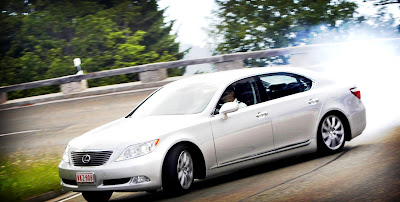
Braking Drift
By trail braking into a corner weight is over the front wheels inducing loss of grip at the rear. This is then balanced through low to medium speed turns with the accelertor and steering.
Choku-Dori (a.k.a Swaying Drift)
This is a slow side-to-side feint like drift where the rear end sways back and forth down a strait.
Clutch Kick
Dipping the clutch pedal and releasing it suddenly (hence the kick) on approach to a corner or used mid drift provides a sudden burst of power losing rear traction.
Dirt Drop Drift
Dropping the rear tyres off the track into the dirt to maintain the drift and carry speed into the next turn.
E-Brake/Handbrake Drift
Pulling the handbrake to lock the rear wheels and lose traction before balancing the drift with steering and the accelerator. Using the hand brake is one of the basic methods to get used to low speed sideways car control.
Feint Drift
Flicking the car to the outside of the corner before turning into the corner carries the weight of the car to the outside of the turn allowing the drift to begin. This is known as a Scandinavian Flick in rally circles where it is widely used.
Heel Toe Shifting
Drifting is about balance and smoothness. Making your gear shifts as smooth as possible means you can concentrate on the correct steering and braking rather than a dodgy gear shift upsetting the balance.
Jump Drift
The jump drift is a technique used in drift races - bouncing the inside wheel over the kerbing to shift the weight over to the opposite side, inducing oversteer.
Kansei Drift
The foot is lifted off the throttle when entering a high speed corner resulting in a weight shift to the front to induce a mild oversteer which is then balanced with the steering and accelerator.
Long Slide Drift
Carried out at high speed, pulling the handbrake allows a high drift angle to be accomplished on the straight to carry though the turn.
Power Over
With enough power, using full throttle (on boost where applicable) on entry to a corner oversteer will be produced. This is again a basic technique, although not mastered many will have experienced.
Shift Lock Drift
Allowing the revs to fall on a downshift before releasing the clutch slows the drivetrain down and inducing oversteer.
Sunday, July 1, 2007
Defensive Driving
Step Drift : Defensive Driving - Four Secrets Of Staying Safe
Okay, you've heard about the benefits of defensive driving and you know that it involves being aware of the potential hazards that other road users can create.
Great! But what exactly does that involve? What should you be doing? What should you be looking out for?
So with that in mind, here are some of the best defensive driving tips that will help to protect you from the dangers that exist on our roads.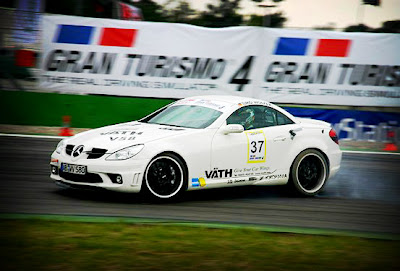
1) One Thousand And One Ways To Create Space
One of the best ways to create space around your vehicle is to avoid travelling too close to the vehicle in front. Ideally, you should be at least two seconds behind the vehicle in front of you.
As soon as the vehicle in front passes a fixed point, such as a signpost or a tree etc, count how long it takes for you to pass the same object. Start counting "one thousand and one, one thousand and two" etc. If you're less than two seconds behind you're too close and need to back off slightly. In bad weather such as ice, snow, fog or heavy rain, this should become the three, four or even five second rule depending upon the severity of the conditions.
Eventually, you'll be able to judge how far behind you should be according to your speed and the road conditions.
This will allow you to pull up in plenty of time if the vehicle in front has to stop suddenly. And while we're on the subject of stopping distances, the distance that it takes your vehicle to stop depends on four factors. A higher speed, heavier vehicle, weaker brakes and poor road surface will all increase the distance that it takes you to stop. So it's important to know the capabilities of your vehicle and learn to drive within them.
And one final word about stopping distances. If your car is equipped with an ABS braking system, it will prevent your brakes from locking up and allow you more control, but it won't bring your car to a stop any quicker.
2) The What If Game
This game is one of the best ways to hone your skills of observation and anticipation. The rules are simple; as you drive around, pay extra attention to everything around your vehicle. Look for potential hazards. Read the road in front and make sure you know what is behind and beside you. Then, keep asking yourself "what if?"
What if the car in front stops suddenly? What if I have to take evasive action? Where is my run off area? What if someone pulls out in front of me?
The more you pose these questions and consider your actions, the more prepared you'll be if anything unexpected happens. It will also help you to anticipate what other drivers may do and prepare you to deal with these events.
3) Go With The Flow
When out on the road, make sure that you drive according to the prevailing conditions instead of trying to force other road users to adopt your style of driving.
For example, if the general speed in one lane is 60mph and 70mph in another, don't try to cruise at 65mph. That would involve travelling too close to the cars in front and constantly overtaking or slowing down vehicles in the other lane.
Don't try to force a column of traffic to go faster than they want to, and by the same token, don't try to police the speed adopted by vehicles in a certain lane. Leave that to the proper law enforcement officers.
And when it comes to changing lanes, be decisive, don't obstruct others and signal all your intentions clearly before you start any manoeuvre. Go with the flow and your journey will be safer and much more relaxing.
4) Be Cautious
The roads are not the right place for taking risks. For example, when you approach an intersection, don't assume that everyone will follow the rules. Signal your intentions so that everyone knows where you're going, remain alert and keep your foot over the brake just in case.
Likewise, make sure that you give all vehicles especially larger vehicles such as trucks full respect. Stay well behind them and when you want to overtake, be decisive and move past with the minimum of delay.
And when passing vehicles, make sure that you stay out of their blind spots. As a general rule, if you can't see the driver in their side mirror, they won't be able to see you.
Whatever happens, don't rely upon your cruise control to drift past other vehicles 1 mph faster. That means you'll be in their blind spot and greater danger for a long time.
With better skills of observation, anticipation, some basic common courtesy and a relaxed attitude your journeys will be safer and much more enjoyable.
by Charlie Moore

